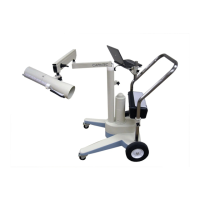CAPINTEC, INC. CAPTUS
®
3000
Bioassay
All staff members who work with Iodine-131, Iodine-125, or Iodine-123 need to have regular
Bioassay measurements taken to monitor exposure levels. Most state and federal radiation
safety regulations mandate that these thyroid measurements be taken periodically.
The CAPTUS
®
3000 uses one bioassay protocol, which is user-defined. Before performing
bioassay measurements on the staff, the staff member names and ID numbers should be
added to the database and parameters for the bioassay protocol should be set up.
TECHNICAL DESCRIPTION
The CAPTUS
®
3000 is a PC based application running on the Windows
®
operating system.
The basic Thyroid Uptake system consists of the following:
• Optional Floor Stand or Table Top Stand
• TUS Collimator
• Isolation Transformer
• NaI (sodium iodide) Detector with Detector Socket Base
Note: Two versions of detectors are available: Flat Face or Drilled.
• Computer System with hardware installed to switch inputs, amplify / calibrate the
signal, and perform multi-channel analysis
• Standard Computer Monitor (or optional Touchscreen Monitor)
• Printer
• Cables for connecting detector, printer, etc.
• 15 foot power cord with hospital grade plug
• Software and Documentation
• Windows XP Home or later,
• CAPTUS
®
3000 Manual and Installation Disks or CDs
• Optional Well Counter with drilled Well Detector
Detector
The CAPTUS
®
3000 system is equipped with one or two NaI (Tl) (Thallium-activated Sodium
Iodide) crystal and photomultiplier tube detector assemblies, a 1024 channel MCA
(Multichannel Analyzer), along with associated electronics and electronic controls which
provide power and amplification of the pulses generated by the detectors, as well as software
modules which record, analyze, manipulate, and store the measured data.
Since NaI crystals are hygroscopic, the detector assemblies are hermetically sealed with an
aluminum coating. If the seal is broken, then water will be absorbed by the crystal, causing
deterioration of its measurement capabilities, and eventually it will require replacement. For
this reason, always handle the detector with care. Avoid scratching the surface with metal
objects such as pens.
2-4 FUNCTIONAL & TECHNICAL DESCRIPTION July 14

